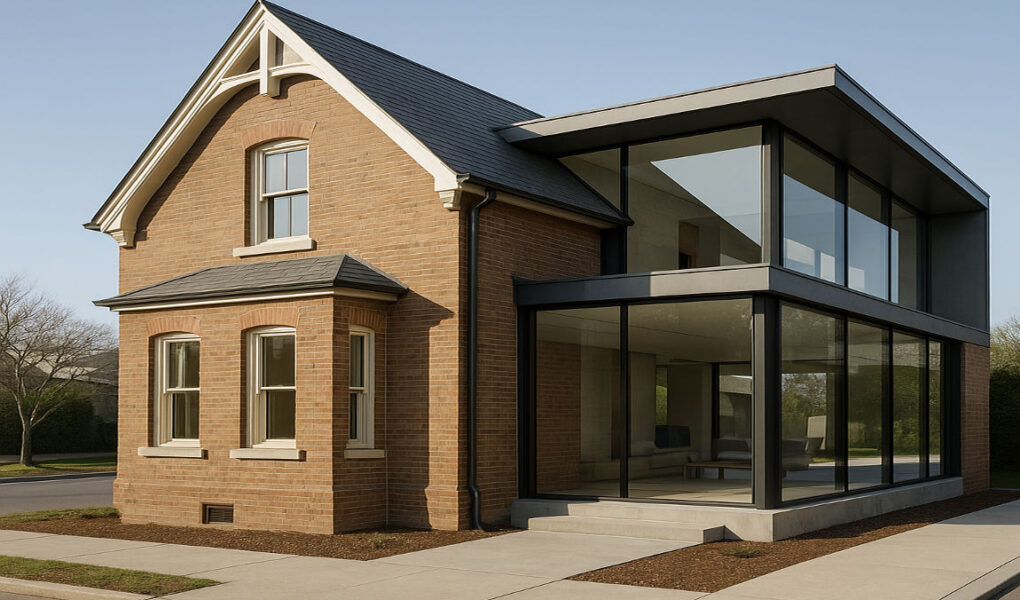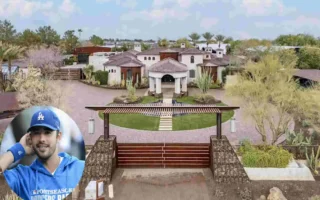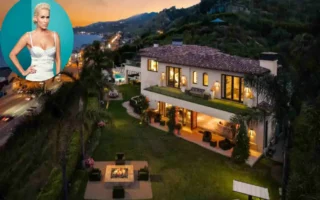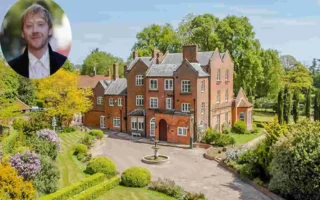Modern architecture is constantly evolving, blending the old with the new in innovative ways. One of the most fascinating trends in recent years is the rise of mullet houses. These homes are a perfect marriage of tradition and modernity, offering a unique solution to the challenges of urban living, heritage preservation, and contemporary design needs.
What Is a Mullet House?
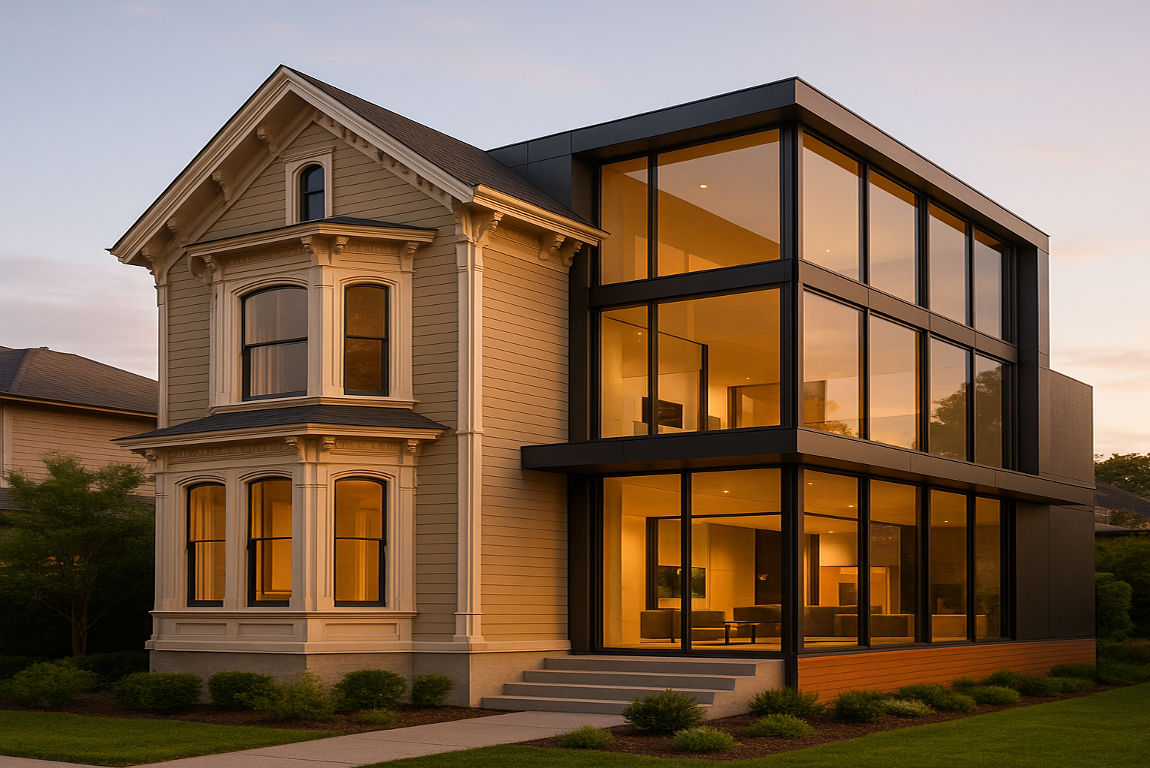
A mullet house is a type of architectural design that combines a traditional or heritage-style facade at the front with a bold, modern extension at the back. The term “mullet” humorously references the iconic hairstyle: “business in the front, party in the back.” Similarly, these homes maintain the charm and character of their original street-facing appearance while embracing contemporary design principles in the rear.
Why Are Mullet Houses Gaining Popularity?
Mullet houses are becoming a go-to solution for homeowners and architects alike. They strike a balance between preserving historical streetscapes and meeting the demands of modern living. In cities with strict heritage overlays or zoning regulations, mullet houses enable creative expansion without compromising the neighbourhood’sneighbourhood’s character. This trend is particularly relevant in urban areas where space is limited, and the need for functional, flexible living spaces is paramount.
In this article, we’ll explore the historical roots of mullet houses, their defining architectural features, and why they’re capturing the imagination of modern homeowners.
You may also read (discover the charm of castle house in st george utah).
Historical and Cultural Context of Mullet Houses
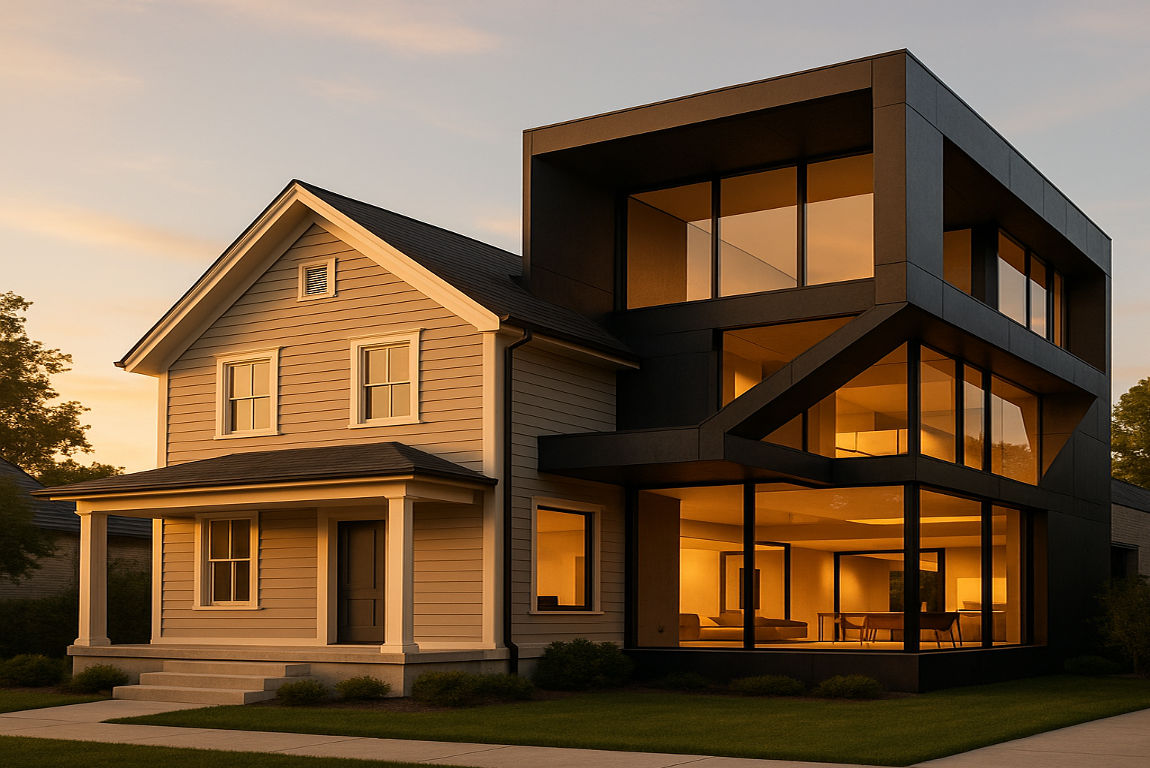
To understand the rise of mullet houses, it is essential to examine their historical and cultural origins. The concept of blending old and new architecture isn’t entirely new, but the mullet house takes this idea to a whole new level.
Origins of the Mullet House Concept
The concept of blending traditional and modern design elements has its origins in urban renewal projects. In many historic neighbourhoods, homes were built in architectural styles such as Victorian, Edwardian, or Federation-era designs. These homes often have strict heritage protections, making it difficult to alter their facades. However, as families grew and modern living demands increased, architects began experimenting with ways to expand these homes while respecting their historical significance.
Examples of Historic Neighborhoods with Mullet Houses
Mullet houses are ubiquitous in cities with rich architectural histories. For example:
- Clarksville, Austin, Texas: Known for its charming historic homes, this neighbourhood has adopted mullet houses as a way to modernise while preserving its character.
- Melbourne, Australia: Heritage suburbs in Melbourne are famous for their Edwardian and Federation-style homes, many of which now feature contemporary rear extensions.
- San Francisco, California: Victorian homes in neighbourhoods like Alamo Square have been transformed into modernised houses, blending their iconic facades with sleek, contemporary additions.
- Toronto, Canada: In areas with strict heritage overlays, mullet houses have become a popular solution for homeowners seeking to expand their living space.
Heritage Overlays and Neighborhood Character Controls
One of the driving forces behind the mullet house trend is the presence of heritage overlays. These regulations preserve the historic character of neighbourhoods by limiting alterations to the street-facing facades of homes. Mullet houses cleverly navigate these restrictions by focusing their modern design efforts on the rear of the property, ensuring the streetscape remains intact.
By respecting historical streetscapes while allowing for modern expansion, mullet houses strike a balance that offers the best of both worlds.
Architectural Features of a Mullet House
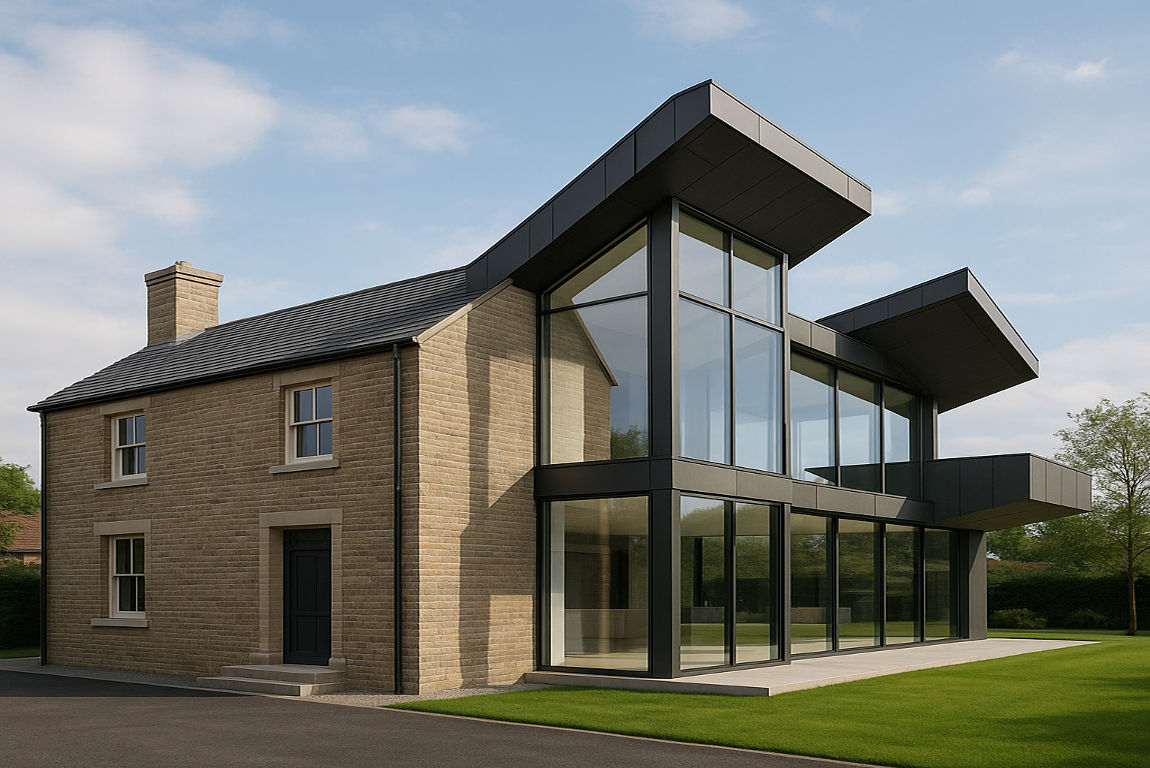
What makes a mullet house stand out? It’s all about the contrast between the traditional front and the modern back. Let’s break down the key architectural features that define this style.
The Traditional Front Facade
The front of a mullet house typically retains its original architectural style. This could include:
- Victorian or Edwardian designs: characterised by ornate details, pitched roofs, and decorative trims.
- Federation-era homes: Red brickwork, verandas, and intricate woodwork.
- Tudor or Gothic Revival styles: Steep gables, arched windows, and stonework.
The goal is to preserve the charm and character of the original structure, ensuring it blends seamlessly with the surrounding neighbourhood.
The Bold, Modern Rear Addition
In stark contrast to the traditional front, the rear of a mullet house is where architects let their creativity shine. Common features include:
- Open-plan layouts: Spacious, flexible living areas that flow seamlessly into outdoor spaces.
- Natural light: Large windows, skylights, and glass walls to maximize light.
- Modern materials, such as steel, glass, timber, and concrete, are often used to create a sleek, contemporary look.
- Innovative roof forms, such as flat roofs, cantilevered extensions, or gabled designs, add visual interest.
Balancing Contrast and Harmony
One of the biggest challenges in designing a mullet house is achieving a balance between the old and the new. Architects often use materials and design elements that create a sense of harmony. For example, timber battens or brickwork in the rear extension might echo the materials used in the original facade.
You may also read (how to decorate your home like kris jenner).
Examples of Creative Design Solutions
- The Mullet House, Austin: This project features a floating roof and playful timber details that contrast beautifully with the home’s traditional front.
- Sandringham Red Brick House, Melbourne: A modern glass and brick rear addition complements the heritage front facade.
Why Mullet Houses Are Rising in Popularity
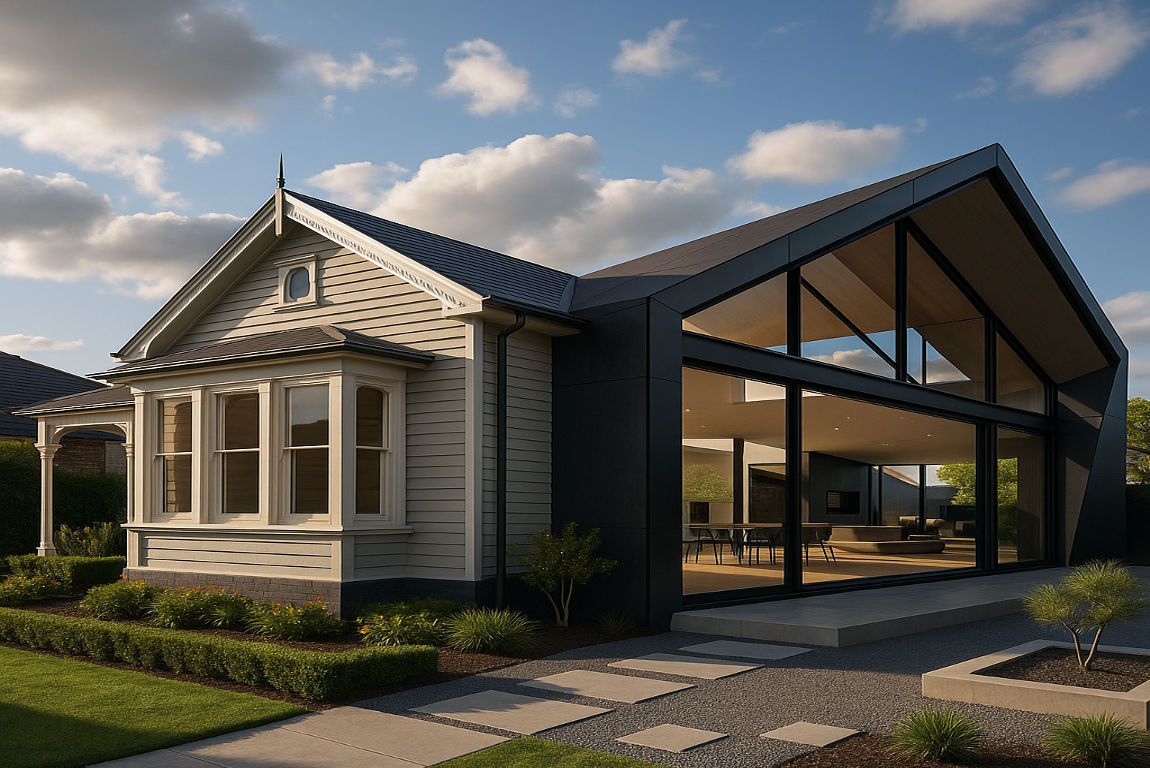
The growing popularity of mullet houses can be attributed to several factors. Let’s explore why this architectural style is capturing the hearts of homeowners and architects alike.
Balancing Heritage and Modernity
Mullet houses provide a distinctive solution to the challenge of preserving heritage while meeting contemporary lifestyle demands. They allow homeowners to enjoy the charm of a traditional facade while benefiting from the functionality of a modern living space.
Navigating Planning and Zoning Restrictions
In areas with strict planning regulations, mullet houses provide a creative way to expand without violating heritage protections. By focusing modern design efforts on the rear of the property, homeowners can comply with zoning laws while still achieving their desired living space.
Sustainability and Liveability
Modern rear extensions often incorporate sustainable design principles, such as:
- Energy efficiency: Large windows and skylights reduce the need for artificial lighting, thereby lowering energy consumption.
- Indoor-outdoor flow: Sliding glass doors and open-plan layouts create a seamless connection to outdoor spaces.
Social and Functional Benefits
The open, modern spaces at the back of a mullet house are perfect for entertaining. Whether you’re hosting a small family gathering or a large party, these spaces are designed for flexibility and functionality.
Case Studies of Notable Mullet Houses
To truly appreciate the beauty and innovation of mullet houses, let’s take a closer look at some notable examples.
Project NameLocationKey Features
Mullet House Austin, Texas Floating roof, timber battens, playful details
Sandringham Red Brick House Melbourne, Australia Heritage front, modern glass and brick rear addition
Alamo Square Residence San Francisco, USA Victorian facade, privacy-focused modern rear
Bilateral House Toronto, Canada Restored front facade, contemporary rear extension
Design Tips for Homeowners Considering a Mullet House
If you’re thinking about renovating or building a mullet house, here are some tips to get you started:
- Work with an experienced architect: Choose someone familiar with heritage overlays and modern design.
- Focus on natural light: Incorporate skylights, large windows, and open-plan layouts to maximise the use of natural light.
- Choose complementary materials: Ensure the front and back of your home feel cohesive and harmonious.
- Plan for outdoor connectivity: Create a seamless flow between indoor and outdoor spaces.
You may also read (discover the magic of a pinwheel house design).

